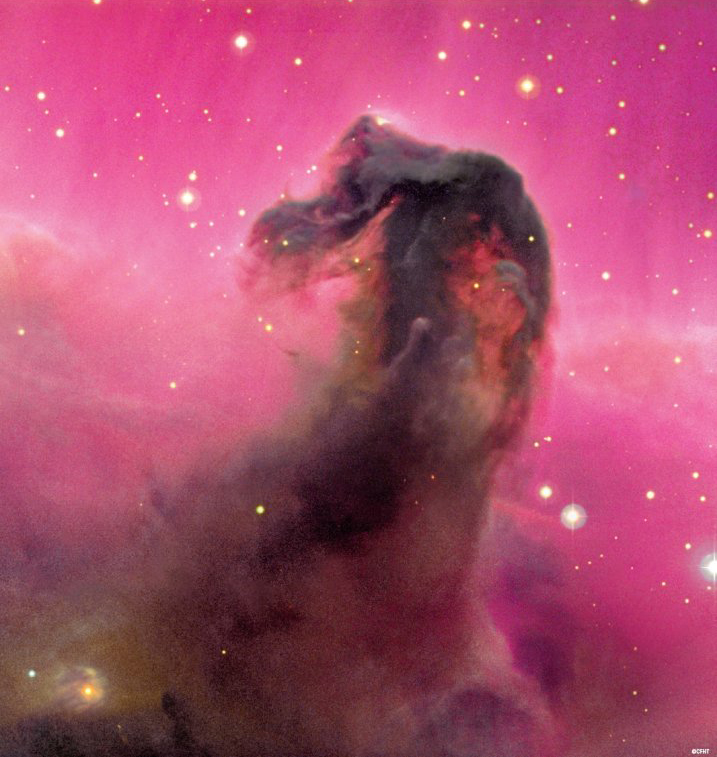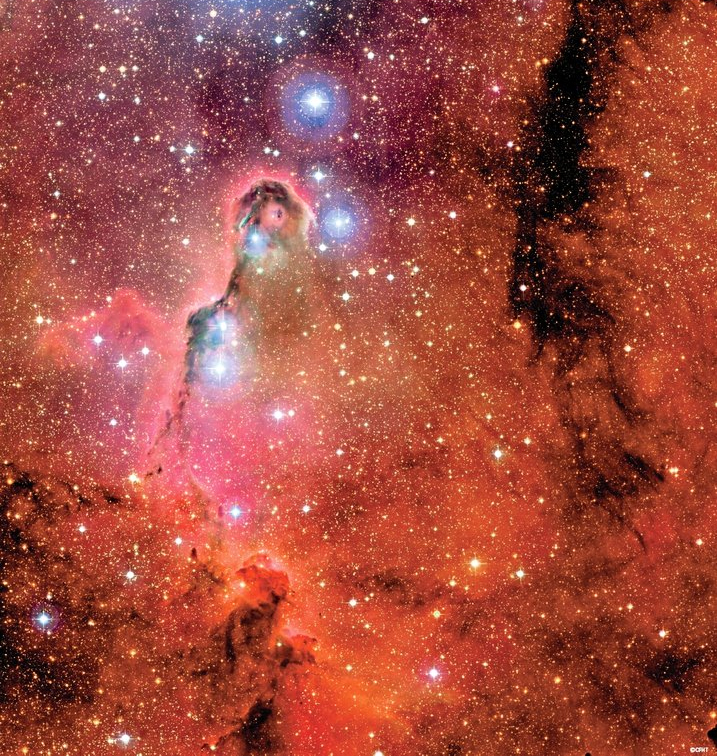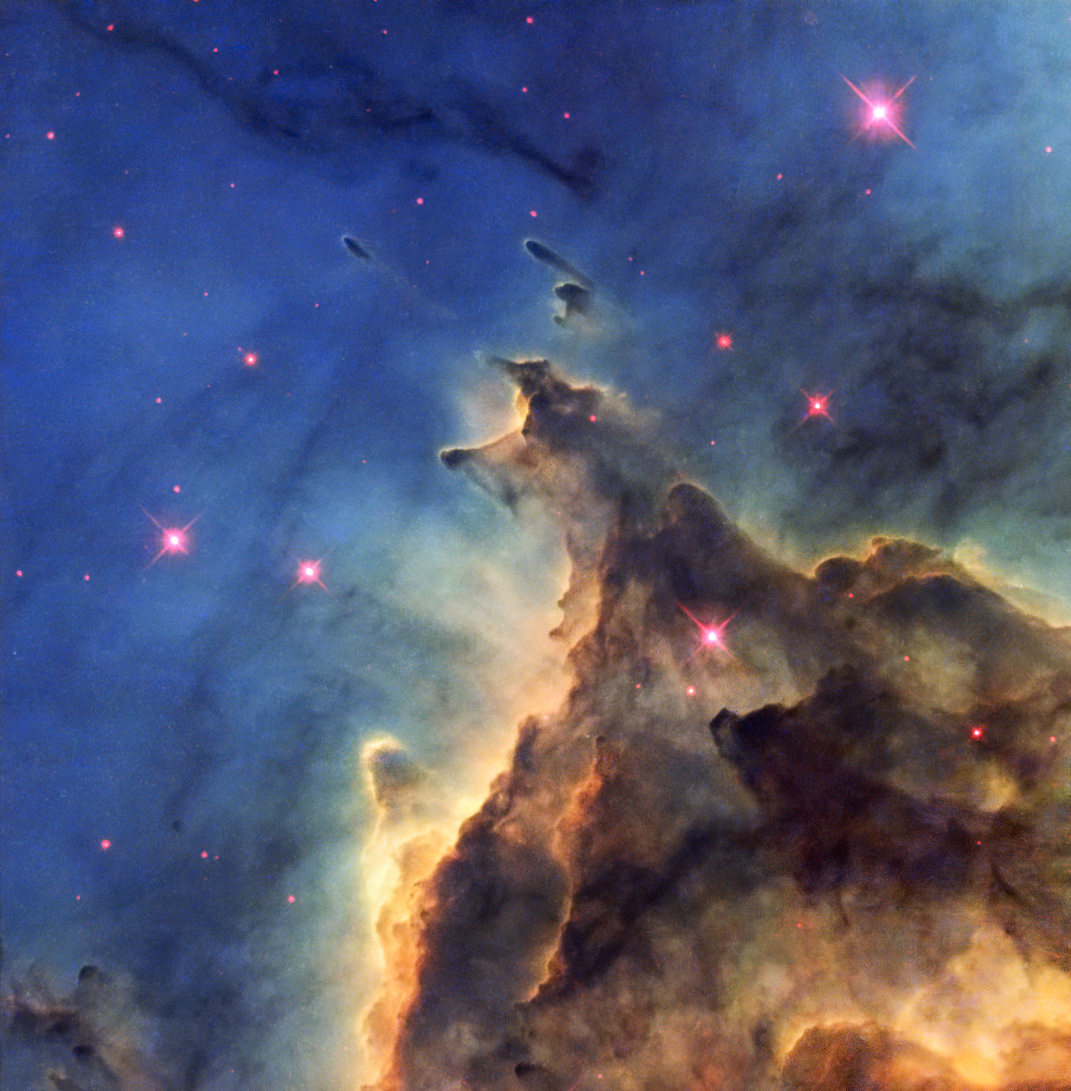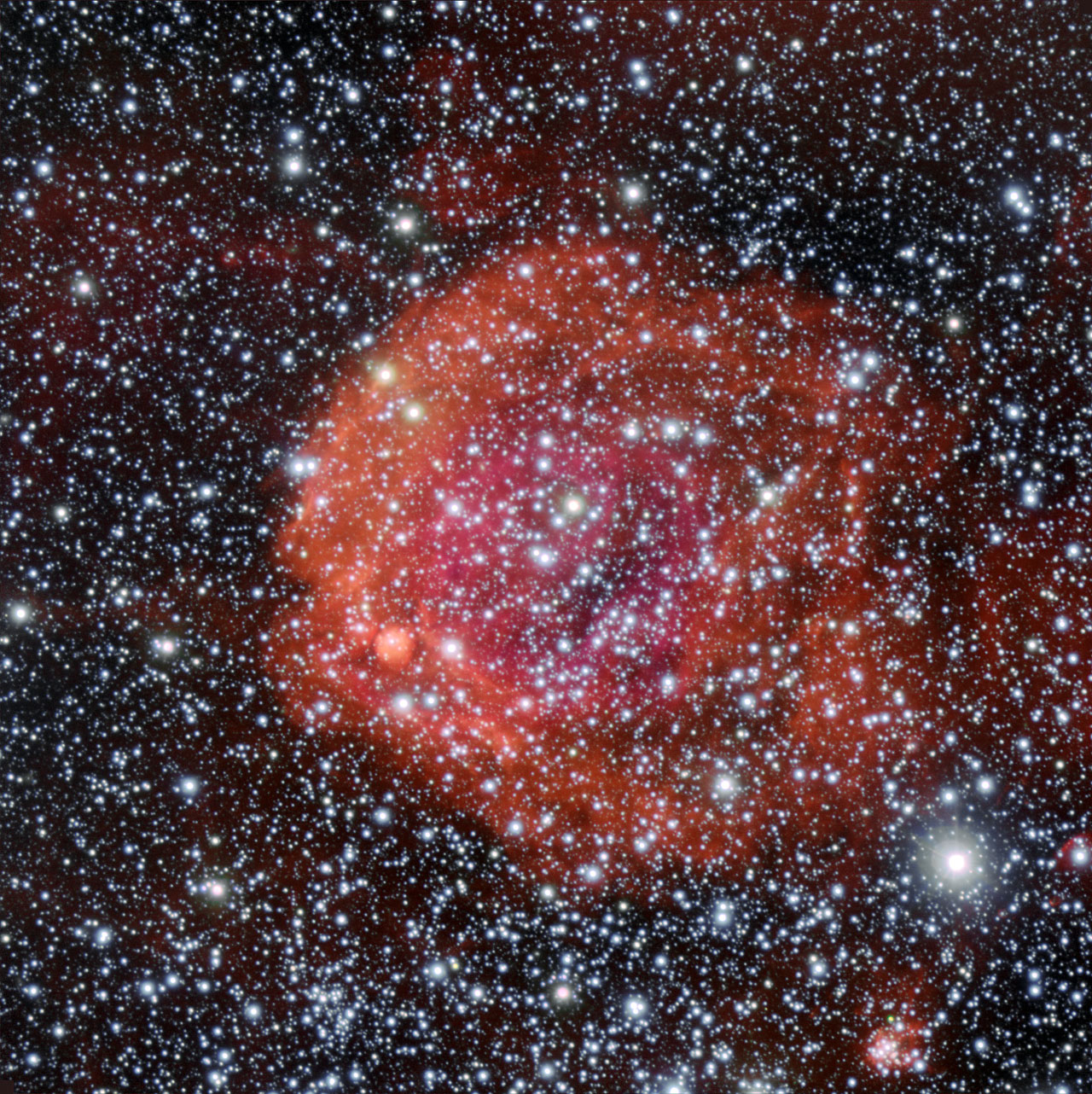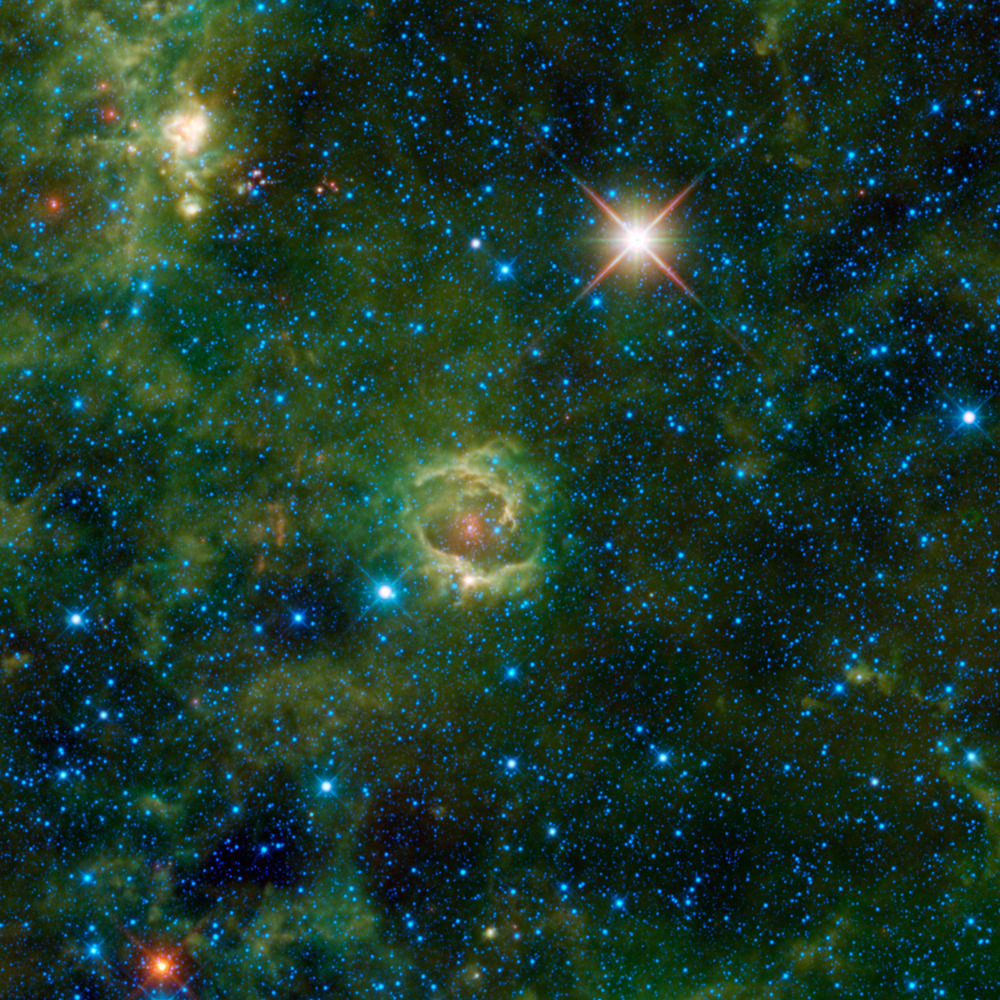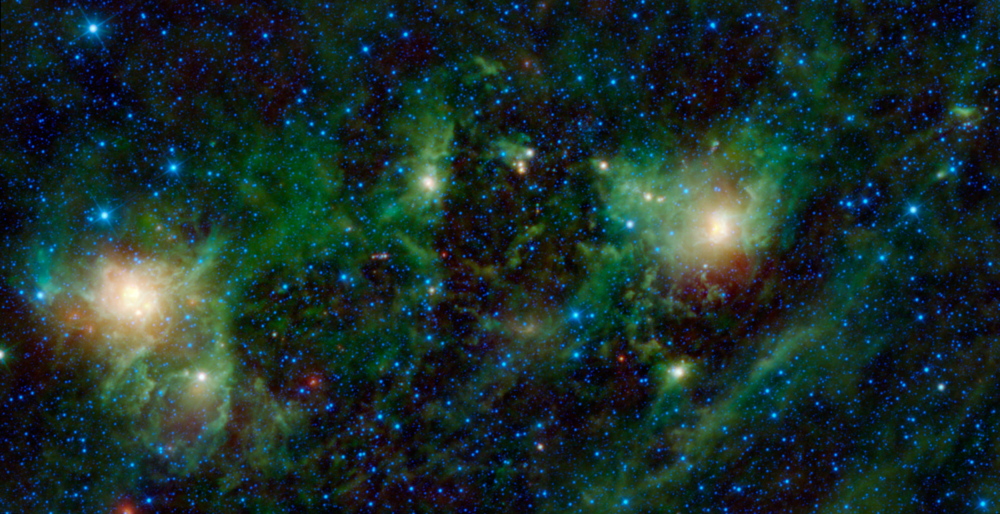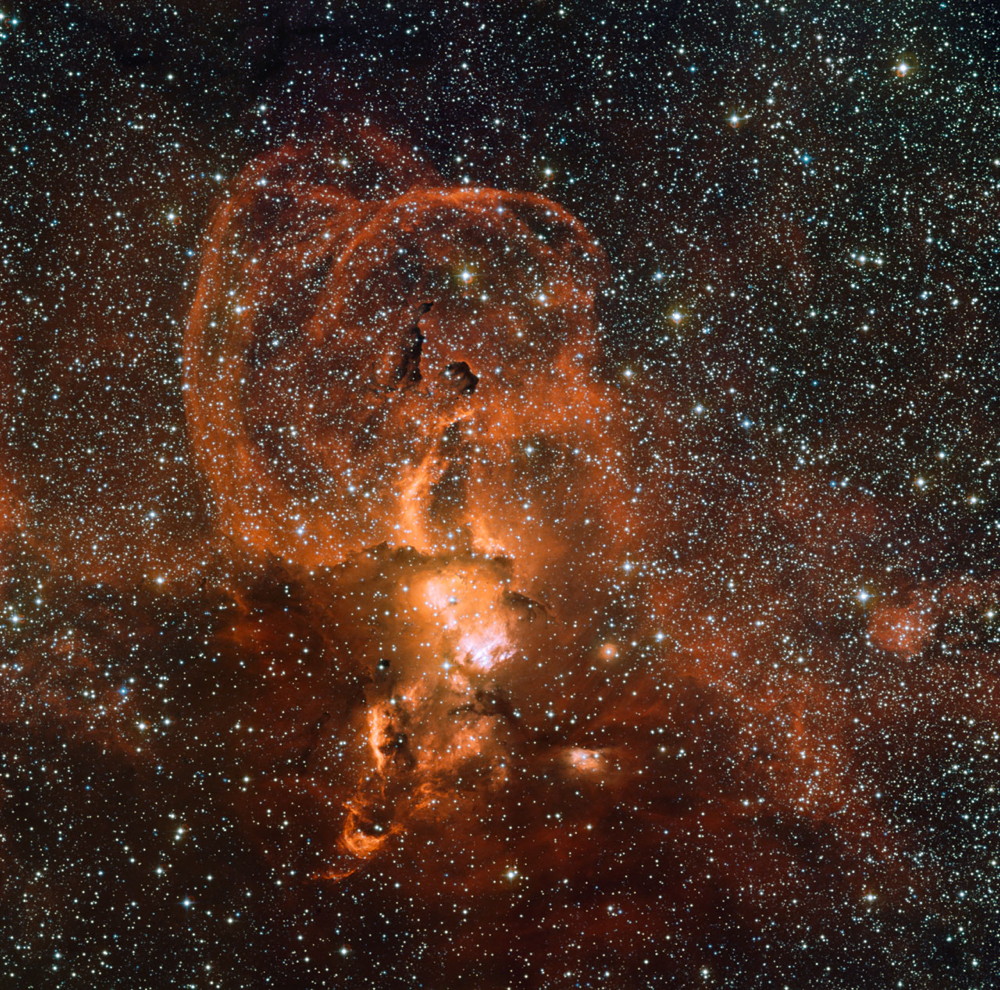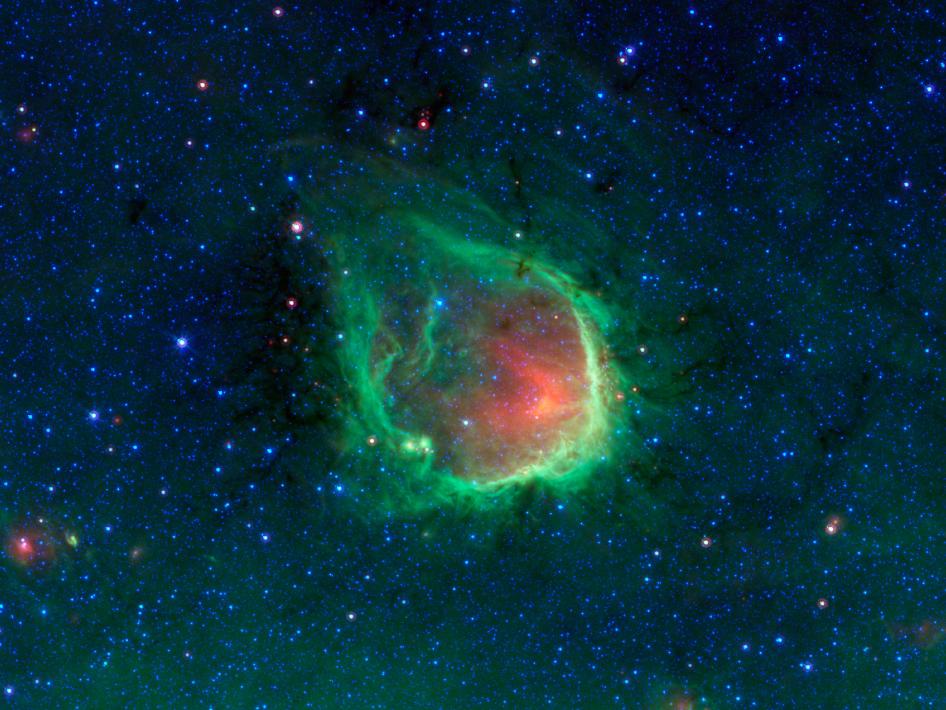50 Fabulous Deep-Space Nebula Photos
Big Star(s) in Space
Monday, January 24, 2011: Pismis 24-1 shines brightest at the top center of this image, which displays the NGC 6357 nebula in Scorpius. Researchers previously considered Pismis 24-1 the most massive star in the galaxy at 200-300 solar masses, far above the current theorized limit of 150 solar masses. However, Hubble and ground-based telescopes have discovered that Pismis 24-1 is not merely a binary star system, but it is composed of a tight binary star system and a third star, meaning the individual stars cannot have broken the mass record.
--Tom Chao
Altered Images
Thursday, February 17, 2011: NASA's Spitzer Space Telescope shows a new infrared view of the North American nebula — but where's the continent? Since infrared light can penetrate dust, while visible light cannot, the picture of the nebula that usually resembles the continent of North America (see image for comparison) changes completely. Dusty, dark clouds in the visible image vanish in Spitzer's view. In addition, Spitzer's infrared detectors display the glow of dusty cocoons enveloping baby stars. Clusters of young stars (about one million years old) appear throughout the image.
--Tom Chao
Horse in the Sky
Friday, March 4, 2011: The Canada-France-Hawaii Telescope produced this stunning image of the well-known Horsehead Nebula. It is part of an enormous cloud of molecular gas and dust obscuring background light from nearby emission nebula IC 434, producing the silhouette.
--Tom Chao
Pack Your Trunk and Say Goodbye to the Circus
Friday, March 18, 2011: The Elephant's Trunk Nebula sits in star cluster IC 1396, in the constellation of Cepheus. A cloud of high-temperature gas warmed up by newly born stars forms the emission nebula. Hydrogen, the most common element in space, glows intensely in red light when heated by hot, young stars seen inside the "trunk."
--Tom Chao
Mountains Come Out of the Sky
Friday, March 25, 2011: Dust in nebula NCG 2174 appears in mountain-like formations, though the structures have no more substance than air. Nearby bright, newly formed stars emanate light and winds that disperse the "mountains." NCG 2174 lies in the constellation Orion.
--Tom Chao
Rose Red Stars
The star cluster NGC 371 appears in this new image from ESO’s Very Large Telescope.
Your Number or Your Name
Monday, April 4, 2011: The distinctive sky feature LBN 114.55+00.22, seen here, emits light, and therefore astronomers class it as an emission nebula. LBN stands for "Lynds Bright Nebula," named after the astronomer who published a catalogue of nebulae in 1965. 114.55+00.22 indicates the nebula’s coordinates in the Milky Way Galaxy.
--Tom Chao
Breaking space news, the latest updates on rocket launches, skywatching events and more!
Keep Your Distance
The three nebulae in this image may appear close together, but in actuality they reside at different distances from the Earth. Nebula NGC 1491 glows on the right side of this WISE image, SH 2-209 sits on the left side and BFS 34 lies in between. NGC 1491 and BFS 34 are part of the same cloud complex at distance of about 10,700 light-years away in the Perseus arm of the Milky Way Galaxy. SH 2-209 lives farther away at about 16,000 light-years distance, located in the outer arm of the Milky Way.
It's a Gas, Gas, Gas
Friday, May 20, 2011: Nebula NGC 3582 contains giant loops of gas that resemble solar prominences. Researchers think dying stars ejected the loops, but this stellar nursery also produces new stars. The young stars emit ultraviolet radiation that causes the gas in the nebula to glow, producing the fiery display. To make this image, Joe DePasquale combined a variety of datasets acquired by the Wide Field Imager on the MPG/ESO 2.2-meter telescope at ESO’s La Silla Observatory in Chile.
—Tom Chao
Green Nebula Ring
This glowing emerald nebula seen by NASA's Spitzer Space Telescope is reminiscent of the glowing ring wielded by the superhero Green Lantern.

Space.com is the premier source of space exploration, innovation and astronomy news, chronicling (and celebrating) humanity's ongoing expansion across the final frontier. Originally founded in 1999, Space.com is, and always has been, the passion of writers and editors who are space fans and also trained journalists. Our current news team consists of Editor-in-Chief Tariq Malik; Editor Hanneke Weitering, Senior Space Writer Mike Wall; Senior Writer Meghan Bartels; Senior Writer Chelsea Gohd, Senior Writer Tereza Pultarova and Staff Writer Alexander Cox, focusing on e-commerce. Senior Producer Steve Spaleta oversees our space videos, with Diana Whitcroft as our Social Media Editor.


